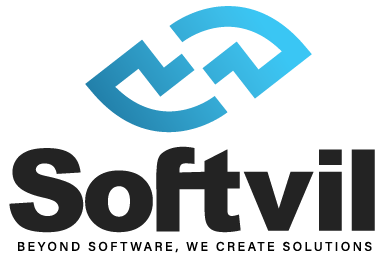Introduction
Test automation takes the lead in technological advancements, enabling organizations in any industry to ensure business continuity and achieve their desired outcomes. These advancements have revolutionized the way organizations approach testing processes, offering efficiency, accuracy, and scalability. By leveraging test automation, companies can streamline their testing efforts, reduce manual errors, and accelerate time-to-market for their products and services. Test automation tools enable comprehensive test coverage, allowing organizations to thoroughly validate software applications, identify defects early on, and ensure a seamless user experience. Moreover, test automation facilitates the execution of complex test scenarios, enabling organizations to assess the performance, reliability, and scalability of their systems under various conditions. This not only enhances the quality of their software but also instills confidence in their customers and stakeholders.
Furthermore, the continuous growth of the test automation market signifies its increasing importance and adoption across industries. Organizations are recognizing the value of incorporating test automation as an integral part of their daily operations, rather than considering it as a separate project. By cultivating a culture of test automation within the organization, companies can drive innovation, improve collaboration between development and testing teams, and ultimately achieve sustainable success. The future of test automation holds great promise, as emerging technologies such as artificial intelligence and machine learning continue to enhance its capabilities. As organizations navigate the digital landscape, test automation will remain a critical enabler for them to adapt, thrive, and deliver high-quality products and services to meet the ever-evolving needs of their customers.
Exploring the Test Automation Culture in Depth
When implementing a test automation-centric culture, it is essential to prioritize efficiency, continuous improvement, and the utilization of advanced technologies such as AI to optimize business processes and enhance overall productivity. The good news is that when implemented effectively and maintained consistently, an automation culture brings several benefits to the business, including:
- Accelerated Time to Market.
- Enhanced test coverage, improved accuracy, and elevated software quality.
- Faster Feedback for New Functionalities.
- Enhanced Reusability of Test Scripts, Simplifying the Testing Process.
- Round-the-Clock Testing Opportunities.
- Reduced Operational Costs.
- Facilitated Continuous Testing or DevOps Transformations.
However, it is important to address three challenges that often hinder the successful implementation of test automation and cause organizations to abandon their efforts prematurely.
Overcoming Resistance to Change
Overcoming resistance to change is a common challenge when implementing a test automation culture within organizations. Resistance can stem from various factors, including fear of the unknown, skepticism about the benefits of automation, and concerns about job security. To address these challenges and overcome resistance, effective communication is crucial. Organizations should clearly communicate the rationale behind adopting a test automation culture, highlighting the potential benefits such as increased efficiency, improved software quality, and faster time-to-market. By explaining how automation can enhance job roles and create new opportunities for growth, employees are more likely to embrace the change.
Addressing concerns is also essential. Providing a platform for employees to express their fears and apprehensions and addressing them openly can help alleviate resistance. Offering training programs and resources to support employees in acquiring the necessary skills for automation can also build confidence and reduce resistance. Additionally, showcasing the benefits of automation through tangible results and success stories can be powerful in overcoming resistance. Sharing examples of how automation has positively impacted other teams or projects within the organization can help employees see the value and inspire them to embrace the change. Overall, a combination of effective communication, addressing concerns, and showcasing the benefits of automation can help organizations overcome resistance and successfully implement a test automation culture.
Establishing a Clear Roadmap
Establishing a clear roadmap is essential for successfully implementing a test automation culture within an organization. A roadmap provides a strategic plan that outlines the path and direction for adopting and integrating test automation practices effectively. The importance of a clear roadmap lies in its ability to provide clarity and direction. It helps stakeholders understand the goals, objectives, and benefits of implementing a test automation culture. By clearly defining these aspects, the roadmap serves as a guiding document that aligns all team members and resources towards a common vision.
Key elements of a roadmap include establishing specific goals and objectives for test automation adoption, defining timelines for different stages of implementation, allocating necessary resources such as budget, tools, and skilled personnel, and setting milestones to track progress. Aligning the roadmap with the organization’s objectives and business needs is crucial for ensuring that the implementation of the test automation culture is in line with the strategic goals of the organization. The roadmap should consider factors such as the organization’s industry, market demands, customer expectations, and competitive landscape. By aligning the roadmap with these aspects, the organization can maximize the benefits of test automation and achieve sustainable success.
Ensuring Sufficient Resources
While test automation solutions should be user-friendly, IT leaders must ensure they have a team of experienced professionals who can derive value from different tools and approaches. These professionals should anticipate risks associated with changing strategies, estimate the probability of transitioning to alternative solutions, and consider agreements regarding the use of open-source tools.
Incorporating an Effective Automation Culture
Now, let’s focus on the practical steps to successfully transition to an automation culture. Below are four essential steps to adhere to.
Step 1: Engage Senior Leadership from the Onset
Cultivating an automation-first approach requires the support of senior management. To gain their buy-in, clearly articulate the current challenges and illustrate how the new culture will address the organization’s business needs. Engage in discussions to ensure unwavering commitment from senior leadership. This initial investment will yield substantial returns.
Step 2: Prioritize Continuous Learning
AI-generated test cases offer several benefits over traditional manual or scripted test cases Continuous learning plays a pivotal role in delivering high-quality code at an accelerated pace when embracing test automation. Provide opportunities for your team to expand their skill sets, allocate time for analyzing industry trends and best practices, and encourage exploration of various tech stacks.
For larger enterprises, consider establishing a center of excellence to foster knowledge accumulation and facilitate ongoing knowledge transfer between departments or divisions. If this seems daunting, partnering with a third-party provider can offer the necessary support. For small and medium-sized businesses (SMBs), create a knowledge base and implement a training program tailored to the project to keep everyone up to date on techniques, approaches, and best practices.
Step 3: Enhance Test Automation Efficiency with AI
AI has become indispensable across multiple industries, contributing to improved customer experiences and overall performance. In the realm of quality assurance and test automation, AI can streamline and simplify processes, significantly reducing or eliminating the need for human effort.
AI improves the reliability of automated tests by quickly adapting to code changes and automating the creation of test cases and defect submissions in bug-tracking systems through data analysis. This results in faster delivery of higher-quality software.
Step 4: Develop an Effective Test Automation Strategy
Preparation is key to ensuring quality at speed. It is crucial to define the scope of automation, select the appropriate toolkit, and configure test environments. Moreover, practicing organized management of test automation suites, ensuring regular updates, implementing a metrics system to monitor progress, and establishing consistent reporting to track software quality dynamics are recommended approaches that promote the adoption of test automation and enhance the speed and quality of product delivery.
Conclusion
Transitioning to a culture of automation is a transformative process that brings numerous benefits to organizations, including smarter work processes, improved software quality, and faster goal attainment. This shift requires engaging senior leadership to drive the change and ensure the necessary resources and support are provided. Fostering a culture of continuous learning enables employees to upskill and adapt to automation effectively. Leveraging artificial intelligence (AI) technologies enhances the capabilities of automation, allowing organizations to achieve higher efficiency and innovation. Developing a detailed test automation strategy ensures a systematic approach to implementation and mitigates risks. By following these strategies, organizations can navigate the challenges and reap the rewards of automation, such as increased productivity and the ability to adapt to evolving market demands.
Embracing automation as a core element of operations is crucial for organizations to thrive in the digital landscape. Engaging senior leadership, fostering continuous learning, leveraging AI, and developing a detailed test automation strategy are key steps in achieving successful adoption. By undertaking this transformation, organizations can optimize their work processes, enhance software quality, and accelerate goal attainment, positioning themselves for sustainable success in the dynamic business landscape.

